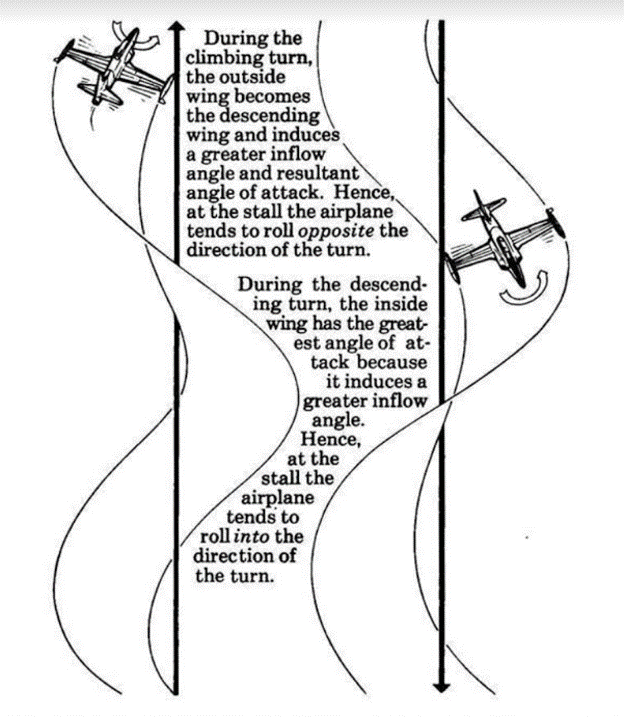
On May 12, 1997, American Airlines flight 903, an Airbus A300-600, N90070, experienced an in-flight loss of control near West Palm Beach, Florida. Of the 2 flight crewmembers, 7 flight attendants, and 156 passengers aboard the airplane, 1 passenger sustained serious injuries and 1 flight attendant received minor injuries during the upset. The airplane sustained minor damage.
The flight was assigned an airspeed of 230 knots and was cleared to descend from 24,000 to 16,000 feet in preparation for landing at MIA. The FDR indicated that, while the autopilot was engaged in the descent, the power levers moved from the mechanical autothrottle limit of 44º to the manual limit of 37º. As the airplane leveled off at 16,000 feet, its airspeed decreased. The pilot began a right turn to enter a holding pattern and added some power, which stabilized the airspeed at 178 knots. However, the right bank and the resultant AOA were increasing, despite left aileron input by the autopilot.
The airplane’s bank angle increased past 50º, and the AOA increased rapidly from 7º to 12º. At this point, the stickshaker activated, the autopilot independently disconnected, and the pilot increased power and used full left rudder to arrest the roll.
The bank angle reached 56º, and the AOA reached 13.7º at 177 knots. The airplane then pitched down and entered a series of pitch, yaw, and roll maneuvers as the flight controls oscillated for about 34 seconds. The maneuvers eventually dampened, and the flight crew recovered the airplane at an altitude of about 13,000 feet.
============================
So a couple of comments. It was out of that event that the chief pilots of Boeing, Airbus and Douglas co-authored a letter to AA to stop training the rudder thing, so in 1999 this came up as part of the loss of control work I was involved in (CAST JSIT LOC-I). That is all a different (although interesting) discussion, but that is not what is pertinent here. Instead, it was the total lack of recognition of the stall. Not listed in the narrative above (as they were discussing it only relative to AA587), was that the pilots – both high time with solid experience – did not know they had stalled until investigators told them later. They felt the stall but interpreted it as windshear. We’ve seen that a number of times now.
More recently, I was reviewing one of my favorite books by an acquaintance (now passed), Sammy Mason (engineering test pilot for Lockheed), the book “Stalls, Spins and Safety“. I highly recommend it, see the link below. I had read it back in the early 80s when he wrote it, but had not picked it up for a long time. One day while working on another project I recalled he had a good picture to describe why the outside wing stalls first in a climbing turn (inserted at the end of the article for the curious), and I thought I’d incorporate that picture into the paper I was working on. As I paged through I stumbled on something I had not thought of for a long time (although it became sort of instinctual flying aerobatics), and that led to the following explanation of what we are seeing in many of these events, both in general aviation, transport and military.
The first factor is that a stall when unexpected is not entered in the same way as what pilots have experienced in training. The lead-up cues are missed. Also, the airplane often is not actually stalling, at least at first. Instead what often occurs is that the high angle of attack creates a lot of drag. Lacking engine thrust to overcome the drag, the airplane starts to descend, often fairly rapidly. It is not quite stalling, but rather this is “mushing”. Then, not recognizing this condition, the pilot attempts to slow the descent and the real stall occurs. In GA aircraft what happens is that the pilot notices the ground suddenly coming up and “yank”! At higher altitudes, even if a pilot recognizes it, the high descent rate has created a situation where an even more extreme descent is needed to recover, and that is well outside what the pilot was trained for, requiring dramatically lower pitch attitudes. The pilot might make the normal recovery attempt as trained, but when that does not work they might assume that they were wrong, it is not stalling, or perhaps there is another factor such as a wind shear that is occurring. This is a normal human response when a method does not yield the desired results and we see this in many scenarios. With this in mind, would you change how you might train for this?







